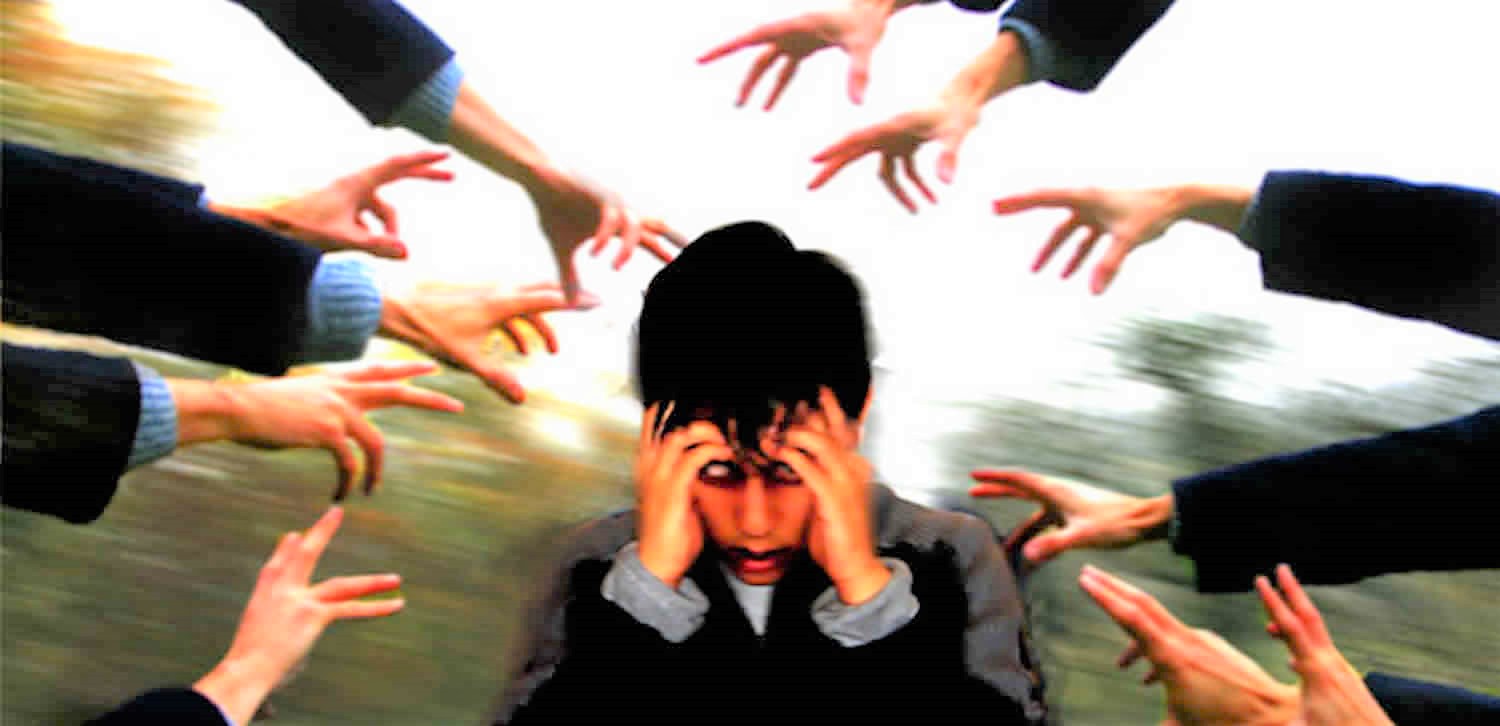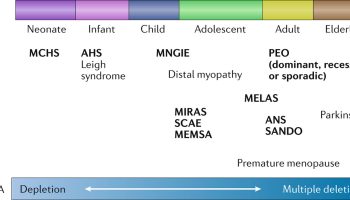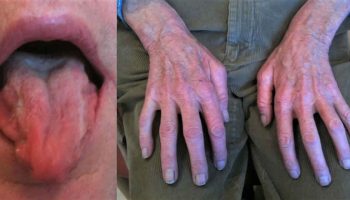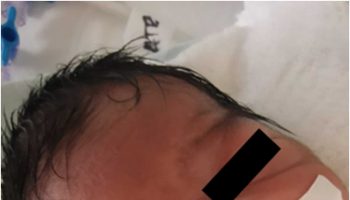Brief psychotic disorder
Brief psychotic disorder according to Diagnostic and Statistical Manual of Mental Disorders Fifth Edition (DSM-5), is the sudden onset of psychotic behavior that lasts less than 1 month followed by complete remission with possible future relapses 1. Brief psychotic disorder is differentiated from schizophreniform disorder and schizophrenia by the duration of the psychosis. Brief psychotic disorder diagnosis is often anticipatory or retrospective due to the diagnostic requirement of complete remission within 1 month. Brief psychotic disorder is an acute but transient disorder with onset of one or more of the following psychotic symptoms:
- Delusions
- Hallucinations
- Disorganized speech
- Grossly disorganized or catatonic behavior
At least one of these symptoms must be delusions, hallucinations, or disorganized speech. The symptoms in brief psychotic disorder last between one day to one month, with a complete return to premorbid level of functioning after the disease course in response to antipsychotic medications. The disturbance in behavior cannot be better accounted by schizophrenia, schizoaffective disorder, mood disorder with psychotic features, or be a direct result of a drug, medication, or medical condition like thyrotoxicosis, sarcoidosis, or syphilis 2.
Three essential elements of the history and physical in an individual with suspected brief psychotic disorder are:
- The presence of at least one positive psychotic symptom such as delusions, hallucinations, disorganized speech, or disorganized or catatonic behavior
- Establishing that the symptoms have not been present for less than one day or more than one month
- Investigating if the disturbance in behavior is otherwise explainable by another mood disorder, medical condition, or substance/medication use
In order to further classify individual cases of brief psychotic disorder, it becomes essential to recognize if the triggering of psychotic symptoms were from a stressful event or if it is postpartum. Common stressors are death, environmental disaster, military activity, recent immigration 3. Acknowledging patient characteristics such presence of a personality disorder that can limit coping skills will also be crucial to identifying individuals at a greater risk of developing disorders like brief psychotic disorder. It is also important to keep in mind that the presenting symptoms of brief psychotic disorder may occasionally be highly severe and mimic the presentation of delirium as a result.
Reliable data on the frequency of brief psychotic disorder are not available, mostly because of its low incidence and variation based on the population under study. However, increased frequency of brief psychotic disorder generally occurs in populations known to be under high stress such as immigrants, refugees, earthquake victims, etc 4. A study researching the Finnish population found the prevalence of brief psychotic disorder to be 0.05% 5. Another study in rural Ireland found 10 cases of brief psychotic disorder among 196 first-admission psychosis cases 6.
Compared to developed countries, reports show a higher incidence of brief psychotic disorder in developing countries. Data drawn from the World Health Organization Determinants of Outcome Study also found that the incidence of brief psychotic disorder in developing countries was ten times as much as that in industrialized countries 7. Brief psychotic disorder is also thought to be more common in women and those with a personality disorder 6.
Brief psychotic disorder causes
Although unclear, the underlying cause of brief psychotic disorder can be a stressful event or trauma 2. There may be a genetic, neurological, or environmental component to brief psychotic disorder as well. Its higher prevalence among patients with personality or mood disorders may suggest underlying biological or psychological susceptibility which may some genetic influence. The specific trigger of brief psychotic disorder, if present, must be specified as follows 8:
- Brief psychotic disorder with marked stressor(s) is also referred to as brief reactive psychosis. It is the onset of psychotic symptoms that occur in response to a traumatic event that would be stressful for anyone in similar circumstances in the same culture
- Brief psychotic disorder without marked stressor(s) is the onset of psychotic symptoms that occur in the absence of a traumatic event that would be stressful for anyone in similar circumstances in the same culture
- Brief psychotic disorder with postpartum onset is defined as the onset of psychotic symptoms that occur within four weeks postpartum
Brief psychotic disorder symptoms
Brief psychotic disorder is characterized by the abrupt onset of 1 or more of the following symptoms:
- Delusions
- Hallucinations
- Bizarre behavior and posture
- Disorganized speech
Associated symptoms may include the following:
- Affective symptoms
- Disorientation
- Impaired attention
- Catatonic behavior
The following are also commonly observed in brief psychotic disorder:
- Emotional volatility
- Outlandish dress or behavior
- Screaming or muteness
- Impaired memory for recent events
A psychiatric history may be helpful.
Symptoms of brief psychotic disorder must be distinguished from culturally sanctioned response patterns that may resemble such symptoms. Cultural and religious background must always be taken into account when a judgment is to be made about whether a given patient’s beliefs are delusional.
Routine physical examination is necessary to exclude medical causes of psychosis. A careful Mental Status Examination is vital.
Brief psychotic disorder complications
The most significant complication associated with brief psychotic disorder is the sudden onset of symptoms and accompanying loss in functioning. It is crucial to make special note of predisposing stressors and comorbid disorders and manage them appropriately as that may have precipitated this episode and may result in similar manifestations in the future. Although pharmacotherapy may help curb the presenting symptoms of brief psychotic disorder, it is psychotherapy that will empower the patient with the skills and techniques to cope with this disorder during and after the symptoms have remitted.
Brief psychotic disorder diagnosis
There are no particular lab studies or psychological testing that are performable to make the diagnosis of a brief psychotic disorder.
The most appropriate tests and imaging to be done would rule out other potential diagnoses or causes for the behavioral disturbances. Hence, it would be apt to do a serum pregnancy test in women to evaluate any underlying triggers for the patient’s behavioral disturbances. Other potential tests to consider ordering would be ECG, electrolytes, glucose level, liver function tests, thyroid function tests, and urinalysis. Urine toxicology tests can help exclude any potential drug or medication intoxication or withdrawal. CT and MRI of the brain may also be performed to evaluate for any underlying structural causes for the symptoms.
Brief psychotic disorder diagnostic criteria
Brief psychotic disorder DSM-5 diagnostic criteria 1:
A. Presence of one (or more) of the following symptoms. At least one of these must be (1), (2), or (3):
- Delusions.
- Hallucinations.
- Disorganized speech (e.g., frequent derailment or incoherence).
- Grossly disorganized or catatonic behavior.
Note: Do not include a symptom if it is a culturally sanctioned response.
B. Duration of an episode of the disturbance is at least 1 day but less than 1 month, with eventual full return to premorbid level of functioning.
C. The disturbance is not better explained by major depressive or bipolar disorder with psychotic features or another psychotic disorder such as schizophrenia or catatonia, and is not attributable to the physiological effects of a substance (e.g., a drug of abuse, a medication) or another medical condition.
- Specify if:
- With marked stressor(s) (brief reactive psychosis): If symptoms occur in response to events that, singly or together, would be markedly stressful to almost anyone in similar circumstances in the individual’s culture.
- Without marited stressor(s): If symptoms do not occur in response to events that, singly or together, would be markedly stressful to almost anyone in similar circumstances in the individual’s culture.
- With postpartum onset: If onset is during pregnancy or within 4 weeks postpartum.
- Specify if:
- With catatonia
- Specify current severity:
- Severity is rated by a quantitative assessment of the primary symptoms of psychosis, including delusions, hallucinations, disorganized speech, abnormal psychomotor behavior, and negative symptoms. Each of these symptoms may be rated for its current severity (most severe in the last 7 days) on a 5-point scale ranging from 0 (not present) to 4 (present and severe).
- Note: Diagnosis of brief psychotic disorder can be made without using this severity specifier.
Brief psychotic disorder treatment
It is important to first and foremost decide the appropriate level of care and whether the patient should be hospitalized or treated on an outpatient basis. The basis for decisions regarding treatment should be on multiple factors such as the patient’s presenting symptoms, socioeconomic stability, the presence of supporting individuals or family, and the presence of homicidal or suicidal ideation. Because of the limited number of clinical trials evaluating the efficacy of specific treatment modalities in patients with brief psychotic disorder, current recommendations for treatment of brief psychotic disorder relies on pharmacological and psychotherapeutic interventions known to be effective in patients with other psychotic disorders 9.
Medications
Antipsychotics, especially second-generation, are the first-line treatment for brief psychotic disorder. Although brief psychotic disorder characteristically shows complete resolution of symptoms within one month of symptom onset, it is suggested to continue treatment with antipsychotics for one to three months after symptom remission. Although oral formulations are preferable as first-line treatment for brief psychotic disorder, intramuscular formulations may have to be used in patients during immediate assessments and treatment, especially in emergency settings.
- Second-generation or atypical antipsychotics: Quetiapine, paliperidone, olanzapine, risperidone, aripiprazole, ziprasidone, and clozapine are the medications that are classified as second-generation and preferred because of their better side effect profile in terms of extrapyramidal symptoms. Olanzapine may be more favorable in lactating mothers as compared to the other drugs from the same class 10. Metabolic symptoms such as weight gain, dyslipidemia, and hyperglycemia are the most common side effects seen with this drug class that would necessitate obtaining a baseline and periodic waist circumference, body mass index (BMI), HbA1c, fasting lipid panel, and fasting blood glucose. Clozapine, in particular, is used in treatment-resistant individuals and requires weekly full blood count monitoring for any blood dyscrasias because of its possibility of inducing neutropenia and agranulocytosis.
- First-generation or typical antipsychotics: Trifluoperazine, fluphenazine, haloperidol, chlorpromazine, and thioridazine are the medications that are classified as first-generation. Extrapyramidal symptoms such as acute dystonia, akathisia, cogwheel rigidity, and tardive dyskinesia are some of the more prominent side effects to keep in mind within this drug class. Anticholinergic medications such as benztropine and biperiden may be added to the treatment regimen to treat the extrapyramidal symptoms.
- Benzodiazepines: Medications within the benzodiazepine class may prove helpful to ameliorate symptom manifestation in acutely combative or agitated individuals 11.
Psychotherapy
As expected, a brief yet major psychotic episode can be highly disruptive to the livelihood and functioning of an individual and his/her family and friends. Psychotherapeutic management of brief psychotic disorder would involve medically informing the patient and his/her family about the condition and treatment modalities employed for the particular patient. Along with emphasizing reintegration into the societal milieu, it is essential to focus on managing comorbid disorders or stressors and improving overall coping skills.
During the treatment process, the patient should be monitored on a long-term basis to assess for relapse or presence of residual symptoms that may necessitate referral to a specialist. It is essential to support the patient to maintain medication adherence as a lack of adherence may facilitate symptom relapse. The overall treatment plan for brief psychotic disorder should ideally include both pharmacological and psychosocial interventions. The biological, psychological, and social dimensions of the patient’s life should in unison dictate the eventual treatment decisions made.
Brief psychotic disorder prognosis
Generally, brief psychotic disorder has a good prognosis and runs its course in less than 1 month. A good prognosis is usually associated with sudden onset, short duration of symptoms, and good premorbid adjustment; the prognosis is especially favorable for patients with no premorbid psychiatric history. Some positive prognostic indicators for the brief psychotic disorder are the absence of genetically-related individuals with schizophrenia or brief psychotic disorder, sudden symptom onset, the presence of stressful triggers, and short duration of symptoms. According to European studies, 50-80% of all patients have no further major psychiatric problems.
Prognosis is notably worse for individuals diagnosed with brief psychotic disorder who have then been able to meet criteria for other disorders characterized by psychosis. A study conducted in Suffolk County, New York in 2000 12 found that only 2% of the first-admission psychosis patients met the criteria for brief psychotic disorder at the six-month mark. Per the Suffolk County study consisting of 11 patients initially given the diagnosis of brief psychotic disorder, three retained the diagnosis of brief psychotic disorder while the remaining nine received diagnoses of mood disorder, schizophrenia, schizophreniform disorder, and other disorders involving psychosis.
As with any other psychotic episode, the risk of harm to self or others increases with an acute episode of brief psychotic disorder 13. Some data indicate that a brief psychotic episode with an acute onset may be an early manifestation of severe mental disorder (eg, an affective disorder) 14. Patients may be at risk for committing suicide during psychotic episodes, especially when brief psychotic disorder is associated with affective symptoms.
- American Psychiatric Association. Diagnostic and Statistical Manual of Mental Disorders, Fifth Edition. Washington, DC: American Psychiatric Association; 2013.[↩][↩]
- Stephen A, Lui F. Brief Psychotic Disorder. [Updated 2019 Jun 3]. In: StatPearls [Internet]. Treasure Island (FL): StatPearls Publishing; 2019 Jan-. Available from: https://www.ncbi.nlm.nih.gov/books/NBK539912[↩][↩]
- Beighley PS, Brown GR, Thompson JW. DSM-III-R brief reactive psychosis among Air Force recruits. J Clin Psychiatry. 1992 Aug;53(8):283-8.[↩]
- Alexandre J, Ribeiro R, Cardoso G. Ethnic and clinical characteristics of a Portuguese psychiatric inpatient population. Transcult Psychiatry. 2010 Apr;47(2):314-21.[↩]
- Perälä J, Suvisaari J, Saarni SI, Kuoppasalmi K, Isometsä E, Pirkola S, Partonen T, Tuulio-Henriksson A, Hintikka J, Kieseppä T, Härkänen T, Koskinen S, Lönnqvist J. Lifetime prevalence of psychotic and bipolar I disorders in a general population. Arch. Gen. Psychiatry. 2007 Jan;64(1):19-28.[↩]
- Kingston T, Scully PJ, Browne DJ, Baldwin PA, Kinsella A, Russell V, O’Callaghan E, Waddington JL. Diagnostic trajectory, interplay and convergence/divergence across all 12 DSM-IV psychotic diagnoses: 6-year follow-up of the Cavan-Monaghan First Episode Psychosis Study (CAMFEPS). Psychol Med. 2013 Dec;43(12):2523-33.[↩][↩]
- Susser E, Wanderling J. Epidemiology of nonaffective acute remitting psychosis vs schizophrenia. Sex and sociocultural setting. Arch. Gen. Psychiatry. 1994 Apr;51(4):294-301.[↩]
- Rushing SE, Jean-Baptiste M. Two cases of brief psychotic disorder related to media coverage of the September 11, 2001 events. J Psychiatr Pract. 2003 Jan;9(1):87-90.[↩]
- Hultsjö S, Berterö C, Hjelm K. Perceptions of psychiatric care among foreign- and Swedish-born people with psychotic disorders. J Adv Nurs. 2007 Nov;60(3):279-88.[↩]
- Usher K, Foster K, McNamara P. Antipsychotic drugs and pregnant or breastfeeding women: the issues for mental health nurses. J Psychiatr Ment Health Nurs. 2005 Dec;12(6):713-8.[↩]
- Thomas P, Alptekin K, Gheorghe M, Mauri M, Olivares JM, Riedel M. Management of patients presenting with acute psychotic episodes of schizophrenia. CNS Drugs. 2009;23(3):193-212.[↩]
- Schwartz JE, Fennig S, Tanenberg-Karant M, Carlson G, Craig T, Galambos N, Lavelle J, Bromet EJ. Congruence of diagnoses 2 years after a first-admission diagnosis of psychosis. Arch. Gen. Psychiatry. 2000 Jun;57(6):593-600.[↩]
- Jorgensen P, Mortensen PB. Reactive psychosis and mortality. Acta Psychiatr Scand. 1990 Mar. 81(3):277-9.[↩]
- Correll CU, Smith CW, Auther AM, McLaughlin D, Shah M, Foley C, et al. Predictors of remission, schizophrenia, and bipolar disorder in adolescents with brief psychotic disorder or psychotic disorder not otherwise specified considered at very high risk for schizophrenia. J Child Adolesc Psychopharmacol. 2008 Oct. 18(5):475-90.[↩]





